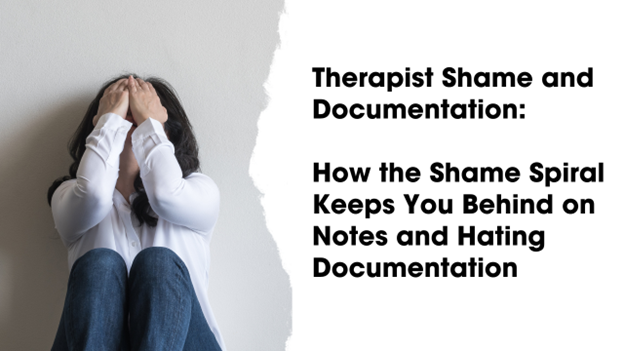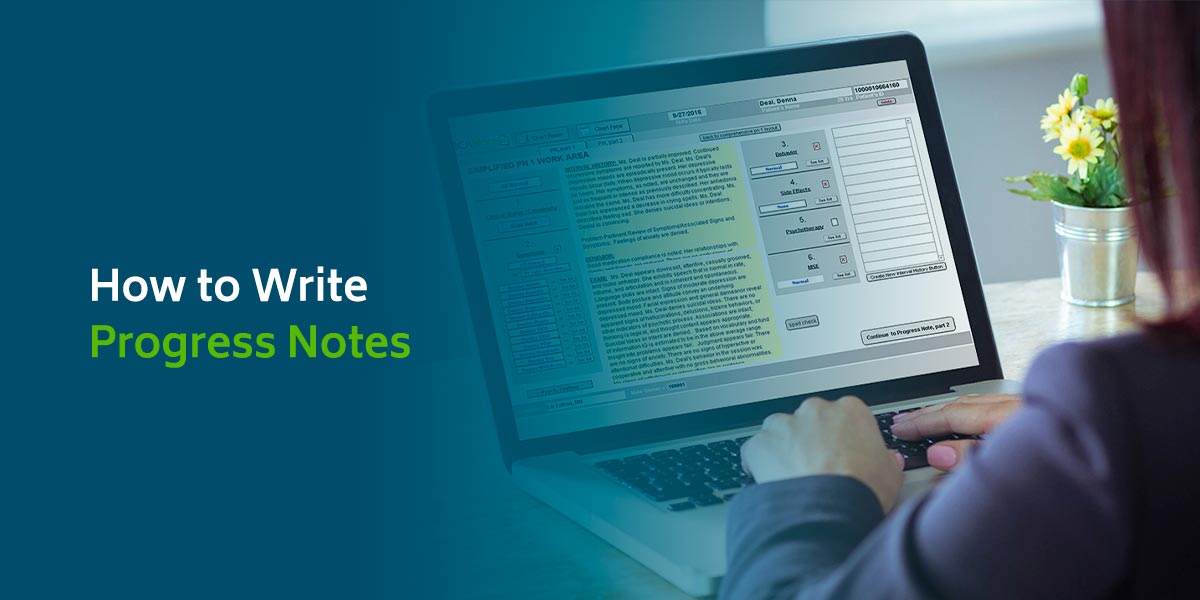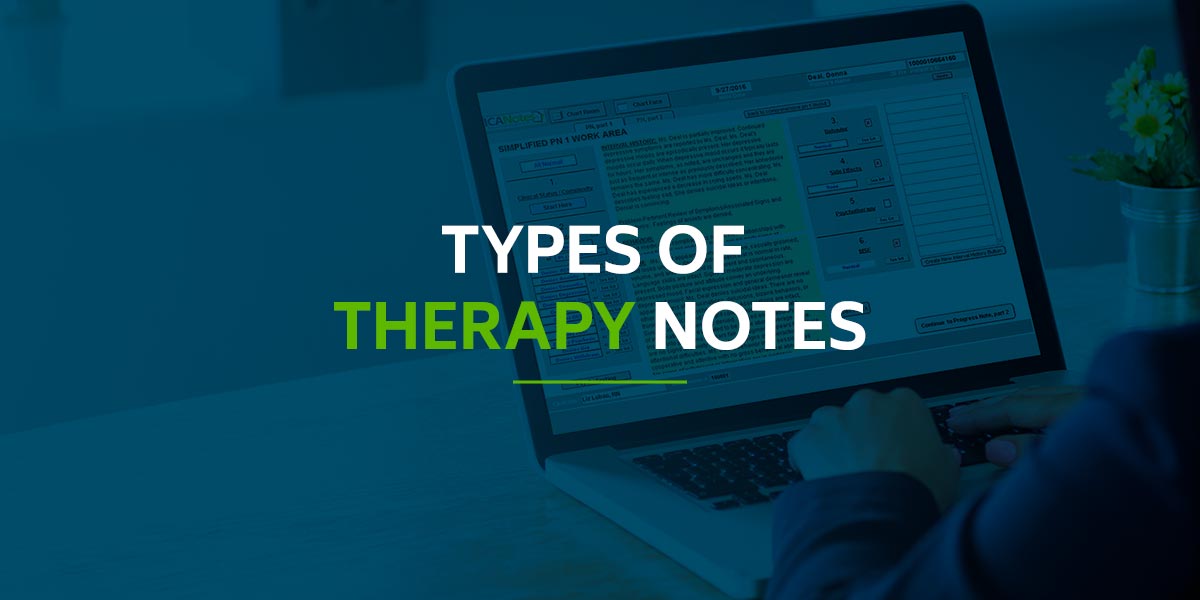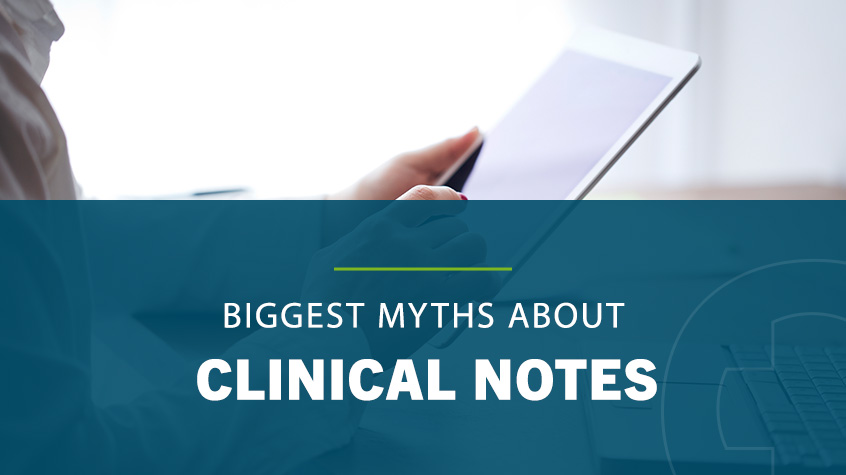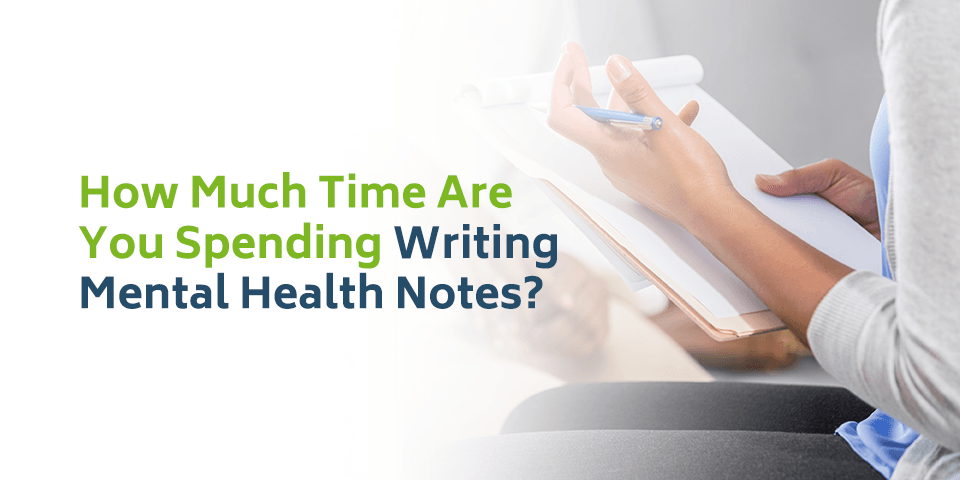
How to Write DAP Notes
In behavioral health, you'll find many different types of progress note formats. One popular approach uses the data, assessment, and plan DAP format. The DAP structure can help you organize your notes into a consistent, understandable format. They're similar to SOAP notes but geared toward behavioral health professionals. Like other progress notes, writing DAP notes efficiently and effectively is a vital part of smooth practice management.
To help you with writing DAP notes, we'll break down what DAP notes are, how to write them, and provide some DAP progress note examples.
Download our DAP Note Cheat Sheet and DAP Note Example
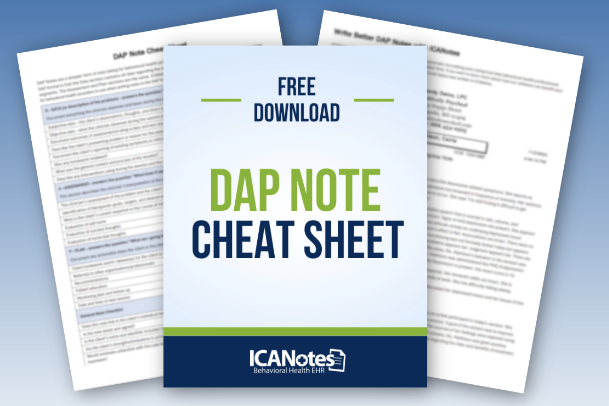
What is a DAP Note?
DAP stands for data, assessment, and plan. These are three sections in the DAP note format that walk through the information presented to you, your clinical findings, and the plan of action. It covers the necessary details while helping you stay brief. Following this format helps create a standardized process that applies to all of your clients and is easy for you and other clinicians to reference.

Since progress notes are part of the client's official record, they need to be thorough, but they can't take up too much time. A structure like DAP helps you organize your findings and stick to what's important. DAP notes and other progress notes are also protected under the Health Insurance Portability and Accountability Act (HIPAA), so they must be stored and used in a way that protects the patient's privacy.
Here's what gets covered in each section:
- Data: This section includes observable data, like screenings and patient statements.
- Assessment: Here, you'll interpret the data with your clinical knowledge, identifying symptoms and potential diagnoses.
- Plan: The last section covers the next steps for both the clinician and the client.
DAP notes can be used for individual or group sessions and virtually any kind of psychotherapy session.
DAP Notes vs SOAP Notes
If you're familiar with SOAP notes, this structure probably sounds similar. SOAP notes — which include subjective, objective, assessment, and plan sections — work in much the same way as DAP notes. DAP notes combine the subjective and objective sections into one overarching “data” section.
SOAP notes tend to work well in medical settings because they have room to separate objective data, such as test results or scans, and subjective data, such as self-reported medication adherence. Behavioral health clinicians, however, may not have much objective data to work with, and some information can toe the line between objective and subjective. Even widely accepted assessments may be considered subjective by some clinicians.
DAP notes minimize the need to debate what kind of data you're working with, so you can quickly jot it down under one simple umbrella. It's a great alternative to SOAP notes for psychotherapy, where the distinction between subjective and objective can blur. The clinician still must stick to the facts, but there's less need to wonder where your data falls, speeding up the process.
In both SOAP notes and DAP notes, the clinician includes similar pieces of information, such as demographic information, descriptions of the client's behavior and their treatment plan.
How Long Should DAP Notes Be?
There is no specific guideline about how long DAP notes should be. Like other progress notes, they should be as concise as possible while including all the necessary information. Your DAP note is meant to be entered in the official record, meaning it can be viewed by other clinicians and may be used in other situations, such as legal cases or audits of your practice. With that in mind, your DAP note needs to be complete to cover your bases, but not excessive.
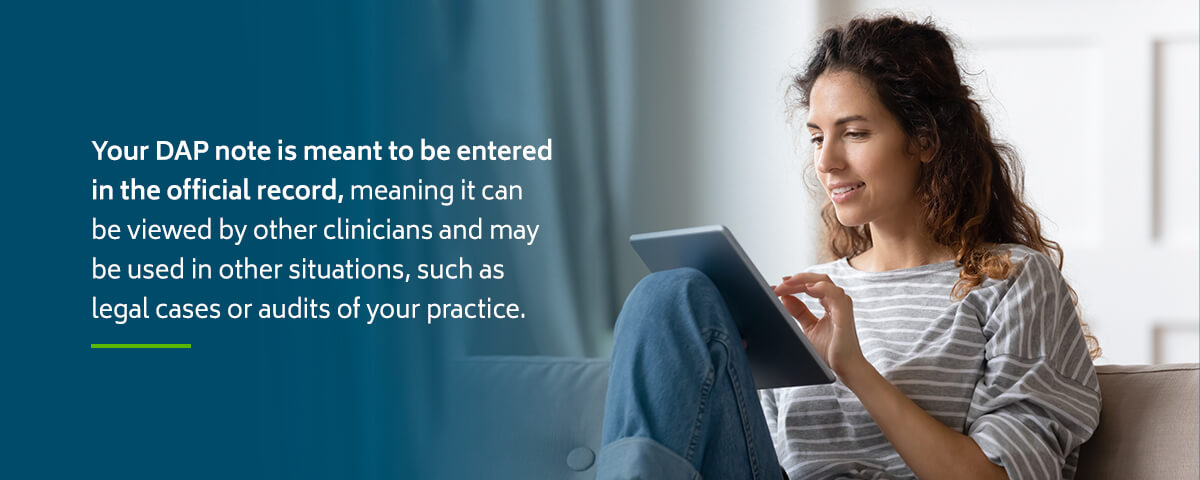
The length of a DAP note will vary depending on your client, their diagnosis, treatment plan, etc. You'll likely create longer notes for a patient with complex or severe disorders than for someone with a mild, relatively simple condition. Some sessions will also be longer than others. For example, you may have a longer note for a session where your client had a change in symptoms or you changed their treatment plan.
How to Write DAP Progress Notes
When writing a DAP note, be sure to provide the right kind of information under each section of the acronym. The general sections can help guide you in the right direction, but we've put together a DAP note checklist to help further. It's also a good idea to use a template that can provide more detail and help you include all the necessary information as you chart.
Data
The first step of writing a DAP note is to jot down any data you collected during the session about things you have observed. This information includes subjective and objective data, but it should still be unbiased and fact-based. Examples might include:
- The client's appearance and grooming
- Any new symptoms they've reported
- The results of screening or assessment tools
- Interventions used during the session
- Direct quotes
- Reason for the session
- Client responses
Assessment
In this section, you get to apply your clinical expertise to the data you collected. Write down the conclusions you've drawn. These might include any assessments you've made about the client's progress, changes to the diagnosis, and evaluation of risk for suicide, self-harm, and other concerns. All of your findings should be supported by the data.
Plan
The last section takes those clinical findings and develops or comments on an action plan. It includes tasks for both the clinician and the client. Some topics you might cover include:
- The location, date, and time of your next session with the client
- Any homework you may have assigned to the client, including lifestyle changes or worksheets
- Progress or changes to the client's treatment plan
- Referrals or other contacts organized by the clinician
These steps typically only cover the time between the current session and the next one. They do not need to reflect the overall treatment plan.
Challenges of Writing a DAP Note
Like many charting strategies, DAP notes come with a few challenges, such as:
- Writing too little: Ideally, the specificity of the data, assessment, and planning sections can help you bypass writer's block by giving you a clear guidelines. While it's important to remember that your notes will need to be professional and clinically valuable, most of the process is simply writing down what happened in the session. The DAP format helps streamline the process.
- Writing too much: On the other hand, some clinicians have trouble keeping notes concise. You might be tempted to include every detail that comes up during the session, but maintaining your focus on the session and individual sections can help you stay brief.
- Perfectionism and time management: Remember that your notes do not need to be perfect. It isn't viable to spend 30 minutes charting after each session. Don't spend too much time perfecting your notes. It's both inefficient and can create more anxiety for you around the process. A DAP note template can minimize the time and effort required, so you can push through your notes quickly and focus on more valuable tasks.
- Storage and retention: After writing a DAP note, you need to store it appropriately. If you work with paper-based DAP notes, you may struggle to keep them organized and safe. Digitizing your progress notes can help you stay compliant with regulations and make the most of your charting. Digital notes are easier to share with other clinicians, access remotely and read.
- No separation between subjective and objective data: If you're a clinician who works with a lot of objective information, the lack of separation between types of data can be frustrating, but many psychotherapists prefer DAP for its simplicity. If you prefer the former approach, consider using SOAP notes. Another popular option is BIRP, which has sections for behavior, intervention, response, and plan. BIRP is helpful for environments where you need to ensure the continuation of care among multiple providers.
No type of progress note is perfect, but DAP is popular among psychotherapists due to its ease of use.
Tips for Writing DAP Notes
Writing good therapy notes is a skill. Try these tips to write strong DAP notes:
- Consider adding a “response” section: Many clinicians like to turn DAP into DARP by adding a section that covers the client's responses. It may not always be applicable, and you could include these responses in the “data” section. Still, as a matter of preference, you might opt to separate this section. Responses cover the client's reaction to statements or assessments. For example, if a client responds to a potential diagnosis with anger or aggression, it could be worth including in the chart.
- Don't over- or underwrite: Other professionals will likely be reading your DAP note, so it needs to have all the necessary information but it shouldn't be 10 pages long. Be concise, but cover the basics. Unfortunately, there is no cut-and-dry rule for how long your notes should be. Use your best judgment depending on the client's needs.
- Write professionally: These notes might be used to inform medical decisions or even legal cases. They could also be used to assess your clinical skill or audit your practice. Your client may read them, too. Keep these audiences in mind. Do not include personal judgments, unprofessional comments, or hard-to-understand shorthand. Stick to industry-recognized terms and abbreviations, avoid naming other individuals unless necessary, and refer to your data for all clinical decisions.
- Remember your compliance needs: You might need to include several elements in your notes to abide by requirements, such as those from insurance providers, professional associations, government regulations, and licensing organizations. Again, templates are a great way to make sure you're meeting these demands with every note.

- Store your work digitally: Modern tools are critical for working efficiently and abiding by healthcare data security demands. Paper progress notes can be lost, damaged, stolen, and hard to keep track of. Plus, you need to have them physically in your hands before you can use them. Digital notes can be stored in the cloud with fully compliant security, and you can take advantage of tools like drop-down menus and electronic health record (EHR) connections that speed up repetitive processes.
DAP Progress Notes Examples
Everyone has their own way of charting, but DAP progress notes examples can help you see the format in action.
DAP Progress Note Example for Anxiety
Below is a DAP note for a client with anxiety and obsessive-compulsive disorder (OCD):
- Data: John was punctual and appeared well-dressed and groomed. He started 50mg of sertraline a few days ago and doesn't notice a difference yet. He scored two points lower on his GAD-7 assessment score, which was last taken three weeks ago. John says he feels overwhelmed at work and is struggling to keep up with his assignments. We discussed stress management tactics to help John ground himself during overwhelming moments at work. We also discussed the possibility of talking to his supervisor about making his project load more manageable.
- Assessment: John actively participated in the session and seems optimistic about his medication. He was able to identify contributors to stress during work and brainstorm solutions. He successfully demonstrated the use of grounding techniques. His GAD-7 score is only mildly changed, but his medication has not reached full efficacy yet.
- Plan: John will continue to take his medication and monitor his symptoms. He will also use his stress management techniques as needed. He will consider discussing his workload with his supervisor. John will return to the main office for his next appointment on June 12 at 2 p.m.
DAP Progress Note Example for Substance Use Disorder
This next example is for a client with substance use disorder:
- Data: Emily appears less interested in her appearance than usual. She typically does her makeup and hair but hasn't done so today. Emily's grandmother passed away last week, who Emily says she was very close to. She says she felt like she “deserved a few drinks" and binged, but now feels guilty for breaking her sobriety. We discussed removing feelings of guilt and creating a list of healthier ways that Emily can address her grief, such as joining a support group, talking to family members, and engaging in her artistic hobbies.
- Assessment: Emily is going through a difficult time and appears frustrated with herself. She is anxious about her ability to stay sober in the future. Small setbacks seem especially worrying to her. She acknowledges that she doesn't pay much attention to her coping mechanisms. She seems disorganized and unsure of where to focus her efforts.
- Plan: Emily will attend our grief support group held on Tuesdays at 6 p.m., starting next week (8/12). She has also agreed to complete at least two items from her list of healthy strategies each week. We will follow up with a telehealth appointment on Aug. 22 at 10 a.m. During this session, we'll focus on building self-esteem to help Emily maintain her sobriety.

Write Your DAP Notes With ICANotes
Outside of the session itself, progress notes can be one of the most time-consuming parts of psychotherapy. If you use the right tools, you can create effective DAP notes in just a few minutes. Through drop-down menus and hierarchical buttons, ICANotes helps you generate notes without any typing required. You get professional, comprehensive progress notes and more time to see more patients or focus on other goals. When you're finished, your notes are stored in a compliant cloud.
ICANotes is an EHR built for behavioral health clinicians, so you can confidently meet the needs of your patients and practice while staying compliant with other organizations. We also offer practice management tools, such as patient portals, scheduling, and more.
Start Your Free Trial - no credit card required!

